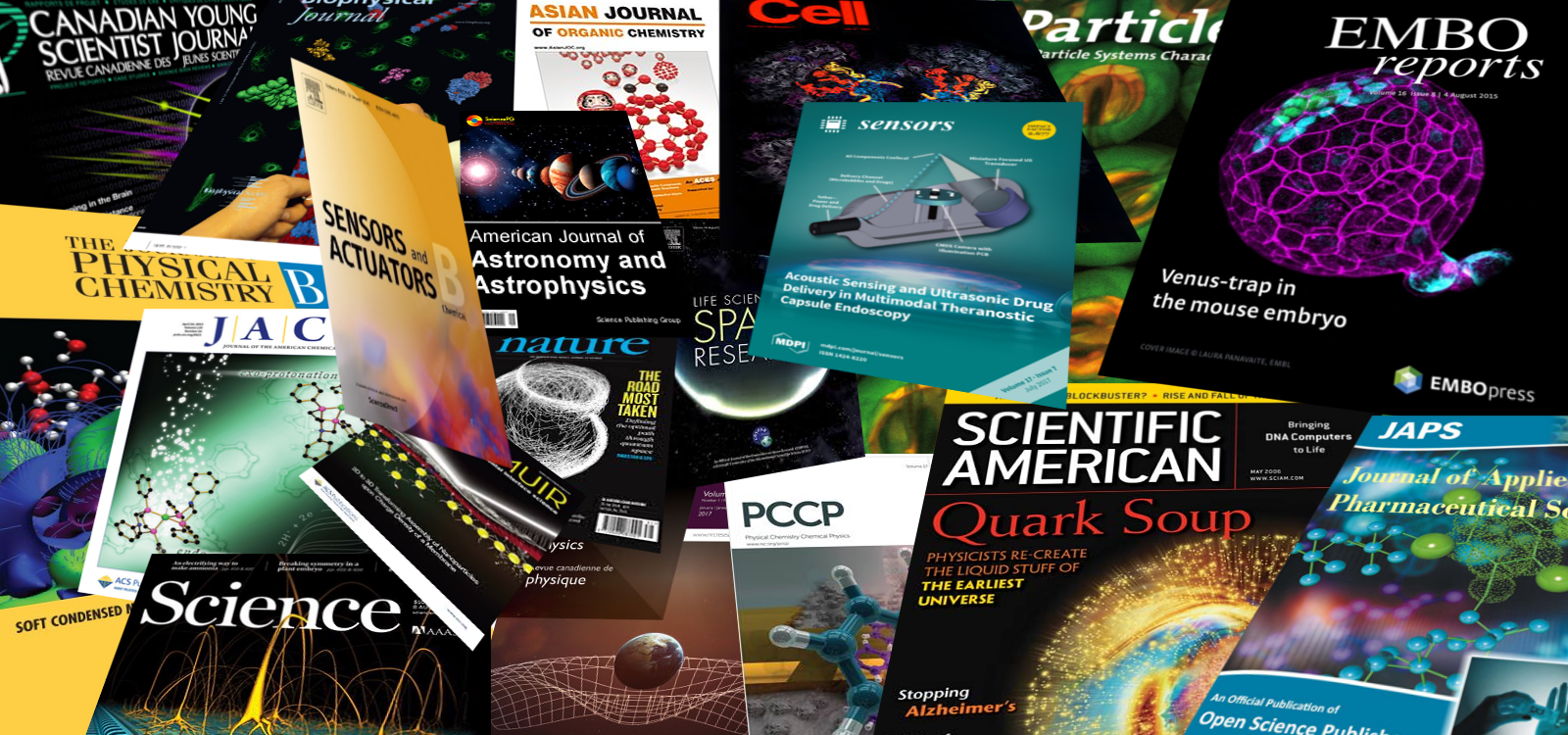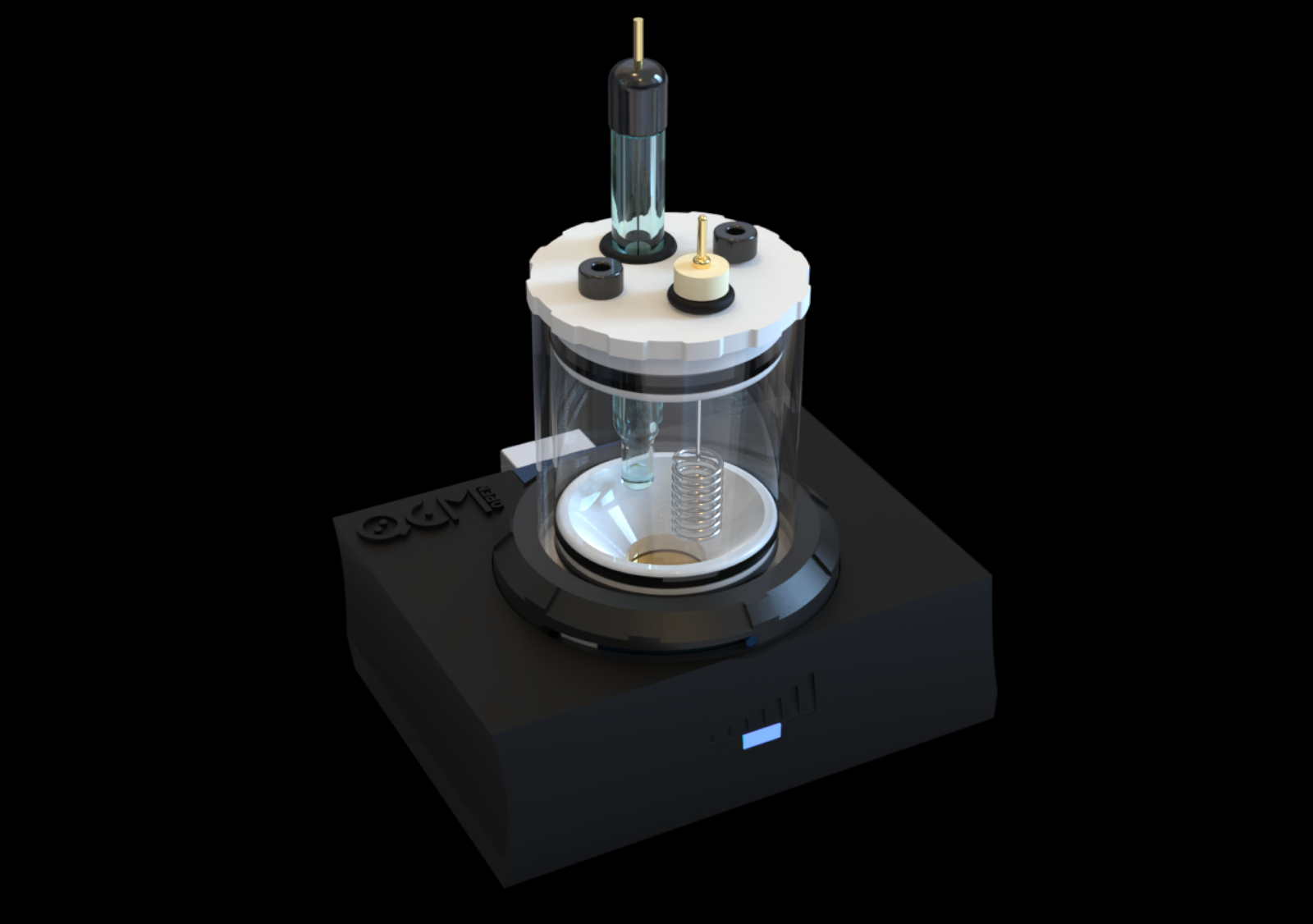openQCM – Powered by Novaetech S.r.l

Scientific Papers
Publications citing the applications of openQCM (by Novaetech S.r.l.) instruments and accessories in scientific research.
The list of scientific papers published on the most important journals showing the usage of openQCM in several scientific fields, such as thin film deposition, chemical sensors, biological research and biosensors.
Because of the large number of publications, we are reorganizing everything by subject areas. This will take some time. Thank you for your patience
2025
Norvilaite, O.; Lindsay, C.; Rymaruk, M. J.; Taylor, P.; Armes, S. P.
Synergistic Stabilization of Oil-in-Water Emulsions Using a Binary Mixture of Chitosan and Hydroxypropyl Cellulose Journal Article
In: Langmuir, vol. 0, no. 0, pp. null, 2025, (PMID: 40875375).
Abstract | Links | BibTeX | Tags: Biopolymers, cellulose, emulsions, lipids, Liquids, openQCM NEXT, QCM-D, Quartz Crystal Microbalance (QCM)
@article{doi:10.1021/acs.langmuir.5c03277,
title = {Synergistic Stabilization of Oil-in-Water Emulsions Using a Binary Mixture of Chitosan and Hydroxypropyl Cellulose},
author = {O. Norvilaite and C. Lindsay and M. J. Rymaruk and P. Taylor and S. P. Armes},
url = {https://doi.org/10.1021/acs.langmuir.5c03277},
doi = {10.1021/acs.langmuir.5c03277},
year = {2025},
date = {2025-08-28},
journal = {Langmuir},
volume = {0},
number = {0},
pages = {null},
abstract = {A judicious binary mixture of chitosan and hydroxypropyl cellulose (HPC) has been used to prepare a series of oil-in-water emulsions via high-shear homogenization at pH 4.9. Employing either biopolymer alone results in markedly inferior emulsion stability, suggesting a synergistic effect. Laser diffraction studies indicate that an optimum chitosan/HPC mass ratio of 5:5 produces the finest, most stable droplets. As expected, smaller oil droplets are produced when employing either higher shear or higher biopolymer concentration, and the mean droplet diameter can be tuned from 5 to 30 μm by adjusting these two parameters. However, the droplet diameter is surprisingly insensitive to the oil mass fraction. Such emulsions remain stable between pH 2.6 and pH 5.9. This binary stabilizer approach works well for a range of model oils. Aqueous electrophoresis measurements indicate that the chitosan component confers substantial cationic surface charge on the droplets. After homogenization, the mean droplet diameter can be gradually increased in a relatively controlled manner by storing the emulsion at 40 °C for up to 48 h. Given the biodegradable and biorenewable nature of chitosan and HPC, the versatile nature of this dual emulsifier system suggests its suitability for a wide range of formulations.},
note = {PMID: 40875375},
keywords = {Biopolymers, cellulose, emulsions, lipids, Liquids, openQCM NEXT, QCM-D, Quartz Crystal Microbalance (QCM)},
pubstate = {published},
tppubtype = {article}
}
A judicious binary mixture of chitosan and hydroxypropyl cellulose (HPC) has been used to prepare a series of oil-in-water emulsions via high-shear homogenization at pH 4.9. Employing either biopolymer alone results in markedly inferior emulsion stability, suggesting a synergistic effect. Laser diffraction studies indicate that an optimum chitosan/HPC mass ratio of 5:5 produces the finest, most stable droplets. As expected, smaller oil droplets are produced when employing either higher shear or higher biopolymer concentration, and the mean droplet diameter can be tuned from 5 to 30 μm by adjusting these two parameters. However, the droplet diameter is surprisingly insensitive to the oil mass fraction. Such emulsions remain stable between pH 2.6 and pH 5.9. This binary stabilizer approach works well for a range of model oils. Aqueous electrophoresis measurements indicate that the chitosan component confers substantial cationic surface charge on the droplets. After homogenization, the mean droplet diameter can be gradually increased in a relatively controlled manner by storing the emulsion at 40 °C for up to 48 h. Given the biodegradable and biorenewable nature of chitosan and HPC, the versatile nature of this dual emulsifier system suggests its suitability for a wide range of formulations.
2023
Qi, Shaojun; Kiratzis, Ioannis; Adoni, Pavan; Tuekprakhon, Aekkachai; Hill, Harriet James; Stamataki, Zania; Nabi, Aneesa; Waugh, David; Rodriguez, Javier Rodriguez; Clarke, Stuart Matthew; others,
Porous Cellulose Thin Films as Sustainable and Effective Antimicrobial Surface Coatings Journal Article
In: ACS Applied Materials & Interfaces, 2023.
Abstract | Links | BibTeX | Tags: antimicrobial, cellulose, evaporation, film, openQCM NEXT, QCM, QCM-D, Quartz Crystal Microbalance, robustness, SARS-CoV-2
@article{qi2023porous,
title = {Porous Cellulose Thin Films as Sustainable and Effective Antimicrobial Surface Coatings},
author = {Shaojun Qi and Ioannis Kiratzis and Pavan Adoni and Aekkachai Tuekprakhon and Harriet James Hill and Zania Stamataki and Aneesa Nabi and David Waugh and Javier Rodriguez Rodriguez and Stuart Matthew Clarke and others},
url = {https://pubs.acs.org/doi/full/10.1021/acsami.2c23251},
doi = {https://doi.org/10.1021/acsami.2c23251},
year = {2023},
date = {2023-03-29},
urldate = {2023-01-01},
journal = {ACS Applied Materials & Interfaces},
publisher = {ACS Publications},
abstract = {In the present work, we developed an effective antimicrobial surface film based on sustainable microfibrillated cellulose. The resulting porous cellulose thin film is barely noticeable to human eyes due to its submicrometer thickness, of which the surface coverage, porosity, and microstructure can be modulated by the formulations and the coating process. Using goniometers and a quartz crystal microbalance, we observed a threefold reduction in water contact angles and accelerated water evaporation kinetics on the cellulose film (more than 50% faster than that on a flat glass surface). The porous cellulose film exhibits a rapid inactivation effect against SARS-CoV-2 in 5 min, following deposition of virus-loaded droplets, and an exceptional ability to reduce contact transfer of liquid, e.g., respiratory droplets, to surfaces such as an artificial skin by 90% less than that from a planar glass substrate. It also shows excellent antimicrobial performance in inhibiting the growth of both Gram-negative and Gram-positive bacteria (Escherichia coli and Staphylococcus epidermidis) due to the intrinsic porosity and hydrophilicity. Additionally, the cellulose film shows nearly 100% resistance to scraping in dry conditions due to its strong affinity to the supporting substrate but with good removability once wetted with water, suggesting its practical suitability for daily use. Importantly, the coating can be formed on solid substrates readily by spraying, which requires solely a simple formulation of a plant-based cellulose material with no chemical additives, rendering it a scalable, affordable, and green solution as antimicrobial surface coating. Implementing such cellulose films could thus play a significant role in controlling future pan- and epidemics, particularly during the initial phase when suitable medical intervention needs to be developed and deployed.},
key = {cellulose, film, antimicrobial, evaporation, SARS-CoV-2, robustness},
keywords = {antimicrobial, cellulose, evaporation, film, openQCM NEXT, QCM, QCM-D, Quartz Crystal Microbalance, robustness, SARS-CoV-2},
pubstate = {published},
tppubtype = {article}
}
In the present work, we developed an effective antimicrobial surface film based on sustainable microfibrillated cellulose. The resulting porous cellulose thin film is barely noticeable to human eyes due to its submicrometer thickness, of which the surface coverage, porosity, and microstructure can be modulated by the formulations and the coating process. Using goniometers and a quartz crystal microbalance, we observed a threefold reduction in water contact angles and accelerated water evaporation kinetics on the cellulose film (more than 50% faster than that on a flat glass surface). The porous cellulose film exhibits a rapid inactivation effect against SARS-CoV-2 in 5 min, following deposition of virus-loaded droplets, and an exceptional ability to reduce contact transfer of liquid, e.g., respiratory droplets, to surfaces such as an artificial skin by 90% less than that from a planar glass substrate. It also shows excellent antimicrobial performance in inhibiting the growth of both Gram-negative and Gram-positive bacteria (Escherichia coli and Staphylococcus epidermidis) due to the intrinsic porosity and hydrophilicity. Additionally, the cellulose film shows nearly 100% resistance to scraping in dry conditions due to its strong affinity to the supporting substrate but with good removability once wetted with water, suggesting its practical suitability for daily use. Importantly, the coating can be formed on solid substrates readily by spraying, which requires solely a simple formulation of a plant-based cellulose material with no chemical additives, rendering it a scalable, affordable, and green solution as antimicrobial surface coating. Implementing such cellulose films could thus play a significant role in controlling future pan- and epidemics, particularly during the initial phase when suitable medical intervention needs to be developed and deployed.

